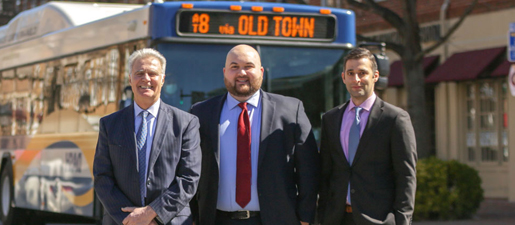
Traumatic brain injuries (TBIs) are among the most devastating types of injuries someone can suffer in an accident. According to the Centers for Disease Control and Prevention (CDC), more than 200,000 people were hospitalized for a TBI-related reason in 2020, and nearly 70,000 people died in part because of these injuries in 2021. These figures don’t even account for the total number of TBIs people suffer every year — they don’t include injuries that were only treated in the emergency room, through a primary care physician, or were untreated entirely.
A significant percentage of severe TBIs are caused by older people falling. The CDC reports that people 75-years-old and above account for nearly one third of all TBI-related hospitalizations, mostly from falls. Some of the other leading causes of severe brain injuries include:
- Auto accidents
- Violence, including gunshot wounds, domestic violence, and other forms of abuse
- Sports injuries
- Explosions and other combat-related injuries
- Workplace injuries
The long-term prognosis for these types of injuries is hard to predict. However, some studies have been conducted that indicate some hope for recovery even in the most severe cases. A recent study published in JAMA Neurology followed patients who suffered a moderate-to-severe TBI and found that withdrawing life-sustaining treatment too quickly was one of the leading causes of death for these injuries.
The research showed that while a significant percentage of the injured patients still suffer from ongoing disabilities, half of the patients with a severe TBI and three quarters of patients with a moderate TBI regained enough mental function to function independently for extended periods of time after 12 months. They also found that every single patient that survived while in a vegetative state regained some level of consciousness by that 12-month mark, and all but one regained at least basic communication skills by that time.
In most cases, someone who suffers a moderate-to-severe TBI will likely be dealing with additional complications throughout the rest of their life. Chronic health issues become more common in these cases, including increased risk of seizures, drug poisoning, infections, and pneumonia according to the CDC. More than half of people recovering from a moderate-to-severe TBI suffer from some form of disability, and approximately one third require assistance with everyday activities. The CDC’s five-year outcomes for people recovering from a TBI are:
- 26% improved their condition
- 22% stayed the same
- 30% worsened their condition
- 22% died
Ongoing care and rehabilitation are vital when combating a TBI. While some people do make a full recovery within five years of this injury, many more do not. The best way to increase the chances of recovery are to ensure that this ongoing care can be provided, and when the injury was caused by an accident, ensuring that your verdict or settlement includes sufficient compensation to cover this treatment is a vital part of your legal case.
If you or someone you love suffered a serious brain injury in an accident caused by someone else’s reckless or negligent actions, you deserve the chance to fight for the compensation you need to cover any medical bills, long-term care, or other damages incurred. At Curcio Law, our traumatic brain injury lawyers have spent decades advocating for the rights of injured victims throughout Virginia and are ready and waiting to provide you with the exceptional legal representation you require. Contact us today to schedule a free case consultation with a member of our firm.

